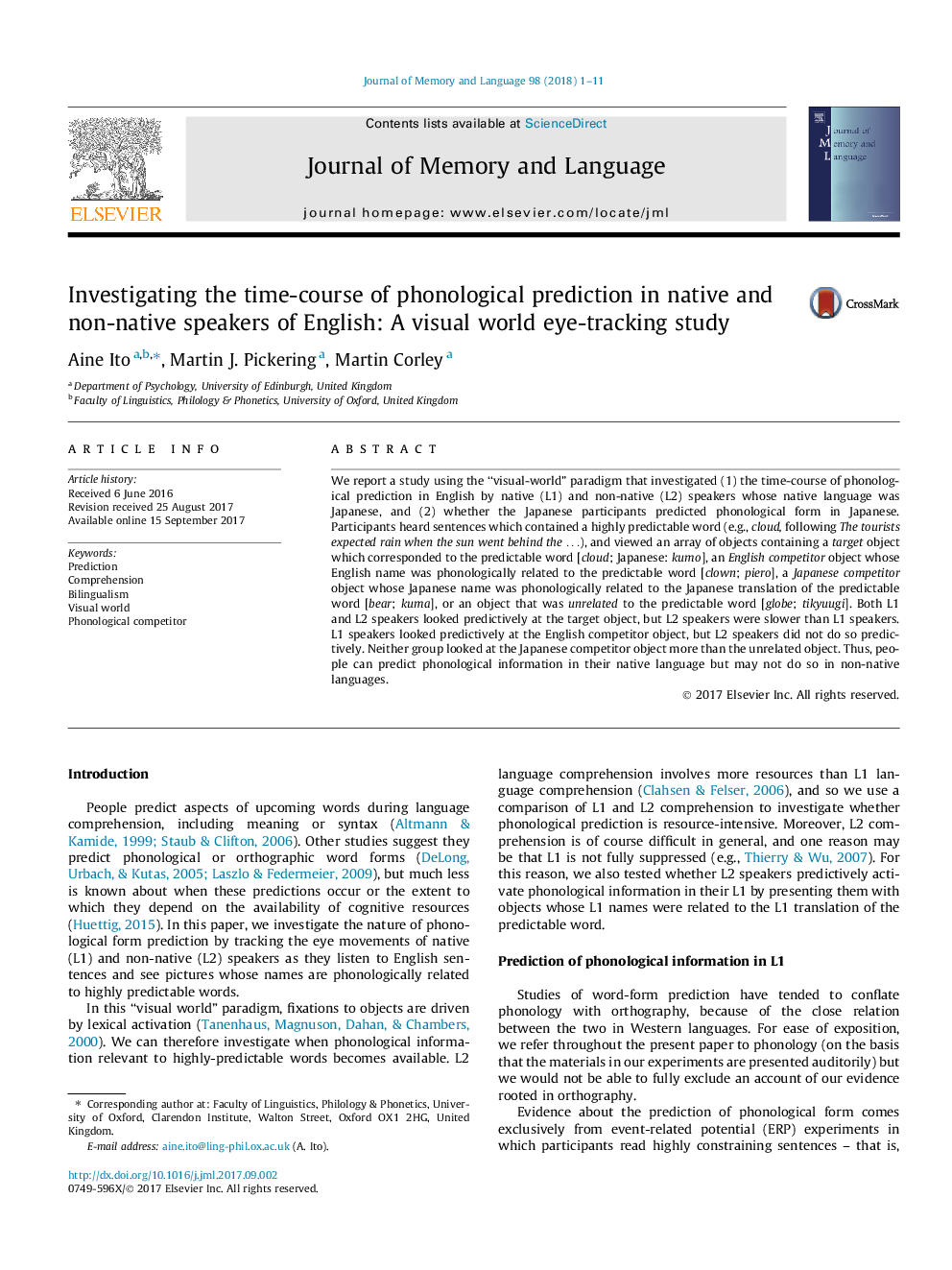| کد مقاله | کد نشریه | سال انتشار | مقاله انگلیسی | نسخه تمام متن |
|---|---|---|---|---|
| 5042480 | 1474621 | 2018 | 11 صفحه PDF | دانلود رایگان |
- A visual world eye-tracking study on prediction of phonological form.
- Native- and non-native speakers predicted some information about upcoming referents.
- Native speakers predicted phonological form, but non-native speakers did not.
- Phonological prediction occurred earlier than previous studies showed.
- The forms of upcoming words can be predicted early in some circumstances.
We report a study using the “visual-world” paradigm that investigated (1) the time-course of phonological prediction in English by native (L1) and non-native (L2) speakers whose native language was Japanese, and (2) whether the Japanese participants predicted phonological form in Japanese. Participants heard sentences which contained a highly predictable word (e.g., cloud, following The tourists expected rain when the sun went behind the â¦), and viewed an array of objects containing a target object which corresponded to the predictable word [cloud; Japanese: kumo], an English competitor object whose English name was phonologically related to the predictable word [clown; piero], a Japanese competitor object whose Japanese name was phonologically related to the Japanese translation of the predictable word [bear; kuma], or an object that was unrelated to the predictable word [globe; tikyuugi]. Both L1 and L2 speakers looked predictively at the target object, but L2 speakers were slower than L1 speakers. L1 speakers looked predictively at the English competitor object, but L2 speakers did not do so predictively. Neither group looked at the Japanese competitor object more than the unrelated object. Thus, people can predict phonological information in their native language but may not do so in non-native languages.
Journal: Journal of Memory and Language - Volume 98, February 2018, Pages 1-11
